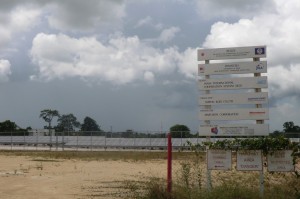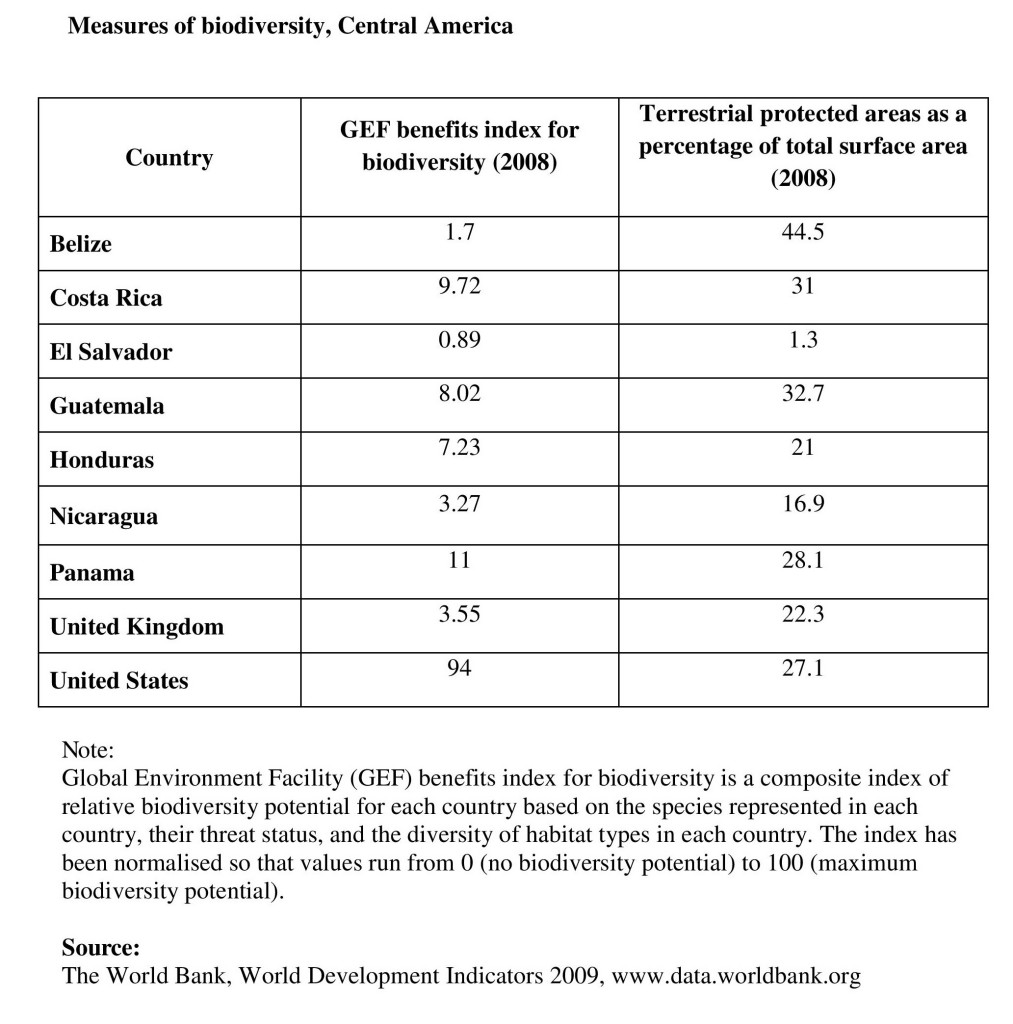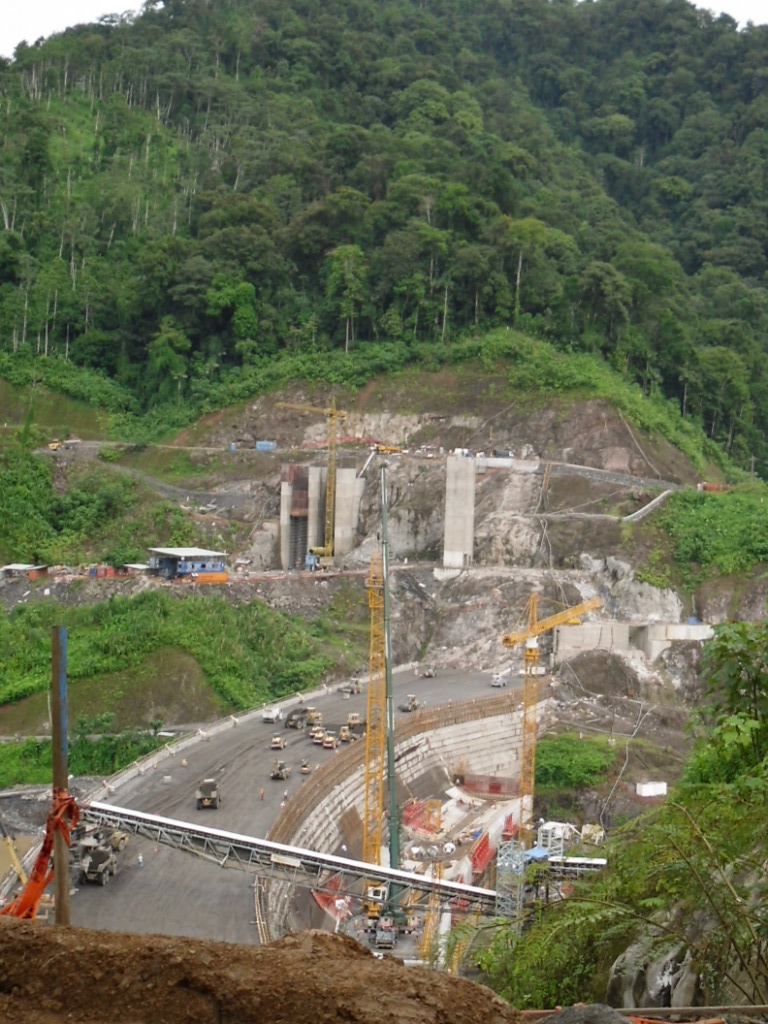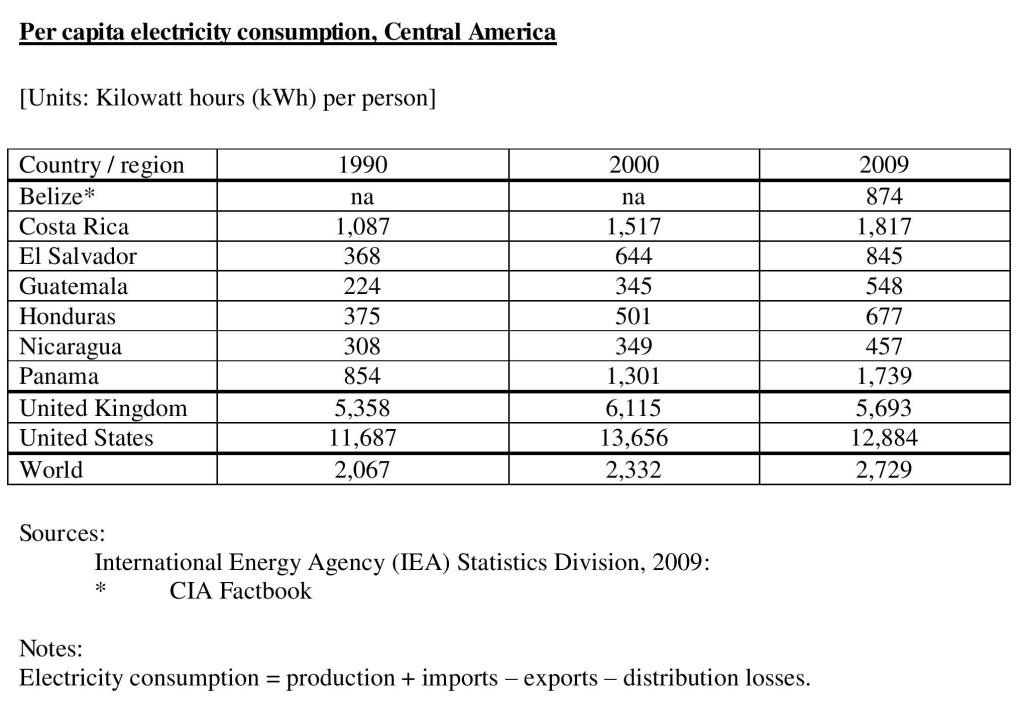Extracted from original text of Chapter 4.
The problems mentioned there by Alida Spadafora [interview] are suitably illustrated in here giving an introduction to a series of HEP schemes currently under construction in the Bocas del Toro province in north-west Panamá. A 2006 report[i] presented a cost-benefit analysis of the four hydroelectric projects. The four dams (Chan 75, Chan 140, Chan 220 and Bonyic) are located in the Changuinola-Teribe hydrographic basin, three projects on the Changuinola River, and one on the Bonyic River. The rivers start in the Amistad National Park and the dams themselves are situated within the Palo Seco Protected Forest.
The required investment for the dams would exceed $538 million, and would result in a combined installed capacity of 446 megawatts. The analysis estimated that the company executing the projects would earn approximately $87 million in yearly profits, which translated into an economic ‘net present value’ of $92 million, representing overall net benefits for Panama. The report concludes that “the projects would most likely be both economically and financially feasible. Nonetheless, they would cause environmental damage in an area of global conservation interest and impose serious hardship on indigenous communities living along these rivers.”[ii] Crucially, they note that these monetary values obscure the environmental and social impacts and costs that the projects would have.
The specific case of one of these four dams, the Chan-75 HEP project, is worthy of further attention as it highlights the collusion of government and private companies and the gangster-like attitude adopted towards affected communities. Perhaps the body count resulting from this case of gangsterism is rather less than in many other case studies given in this book, but the arrogance and the willingness to ride roughshod over local people is as strong as ever. Here we present a few of the benefits and advantages of the scheme as predicted largely by the website of AES Changuinola, the company managing the project. Here we present a few of the social and environmental problems already caused and predicted to occur as a result of the scheme. The latter also lists several articles to which readers are referred for a more in-depth treatment that this case deserves. Several of these articles document the human rights abuses that have been committed against the Ngöbe and the Naso peoples in considerable detail, and in this regard the reader is referred specifically to Cultural Survival’s ‘Dam Nation’ article. These abuses are also considered again in Chapter 8 of this book and reference forward specifically to this website’s items entitled ‘The Ngöbe-Bugle and dam projects on the Río Changuinola‘ and ‘Testimony from the Naso‘ provides further evidence of the gangster attitudes of the Panamanian government and of the companies involved in the development towards the people affected.
Application to the Clean Development Mechanism of the United Nations has been made for subsidies to support the Chan-75 project on account of the savings in greenhouse gases estimated for the project. The application made by AES Changuinola failed to mention the social and environmental impacts or the social opposition to the scheme. In fact it cited “ample support” from local populations, but when the UN Special Rapporteur on indigenous rights visited the project area he found “significant discontent”.[iii] Osvaldo Jordan goes further in his critique of the development: “The Chan 75 hydroelectric project … revealed the monstrosity of the neo-liberal multicultural citizenship regime that had been adopted by the Panamanian state in the 1990s.”[iv] In similar vein, Finley-Brook and Thomas assert that the case demonstrates “hybrid neo-liberalisation as private and state institutions sell formerly collective resources to feed urban electrification and foreign carbon markets.”[v]
Oscar Reyes from Carbon Trade Watch considers the Chan-75 project to be another example that proves the UN’s Clean Development Mechanism is being treated as “a subsidy stream for environmentally destructive projects.” He states that “it risks a lose-lose scenario, where the people and environment of Panama are threatened by a project that would allow industries elsewhere to continue polluting.”[vi]
The issue of the Clean Development Mechanism and the issuing of carbon credits to dam projects is taken up again in greater detail in Chapter 10.
[i] Cordero, S., Montenegro, R., Mafla, M., Burgués, I., and Reid, J. (2006) ‘Análisis de costo beneficio de cuatro proyectos hidroeléctricos en la cuenca Changuinola-Teribe’, INCAE Business School, Alianza para la Cooperación y el Desarrollo, Asociación ANAI, and the Conservation Strategy Fund (July).
[ii] Ibid., p.10
[iii] James Anaya (7 September 2009) Informe del Relator Especial sobre la situación de los derechos humanos y las libertades fundamentales de los indígenas: Observaciones sobre la situación de la comunidad Charco la Pava y otras comunidades afectadas por el proyecto hidroeléctrico Chan 75 (Panamá), Report presented to the Human Rights Council at the UN General Assembly.
[iv] Osvaldo Jordán (2008) ‘“I entered during the day, and came out during the night”: power, environment and indigenous peoples in a globalising Panama’, Tennessee Journal of Law and Policy 4 (2) 467-505. [Quote from P.500]
[v] Op.cit. (Finley-Brook and Thomas, p. 269.
[vi] Osvaldo Jordan and Oscar Reyes (2008) UN ‘clean development’ money sought for dam that threatens World Heritage Site in Panama, La Alianza para La Conservacion y El Desarrollo and Carbon Trade Watch /Transnational Institute, http://www.tni.org/article/un-%E2%80%98clean-development%E2%80%99-money-sought-dam-threatens-world-heritage-site-panama (Accessed 23/09/2010)
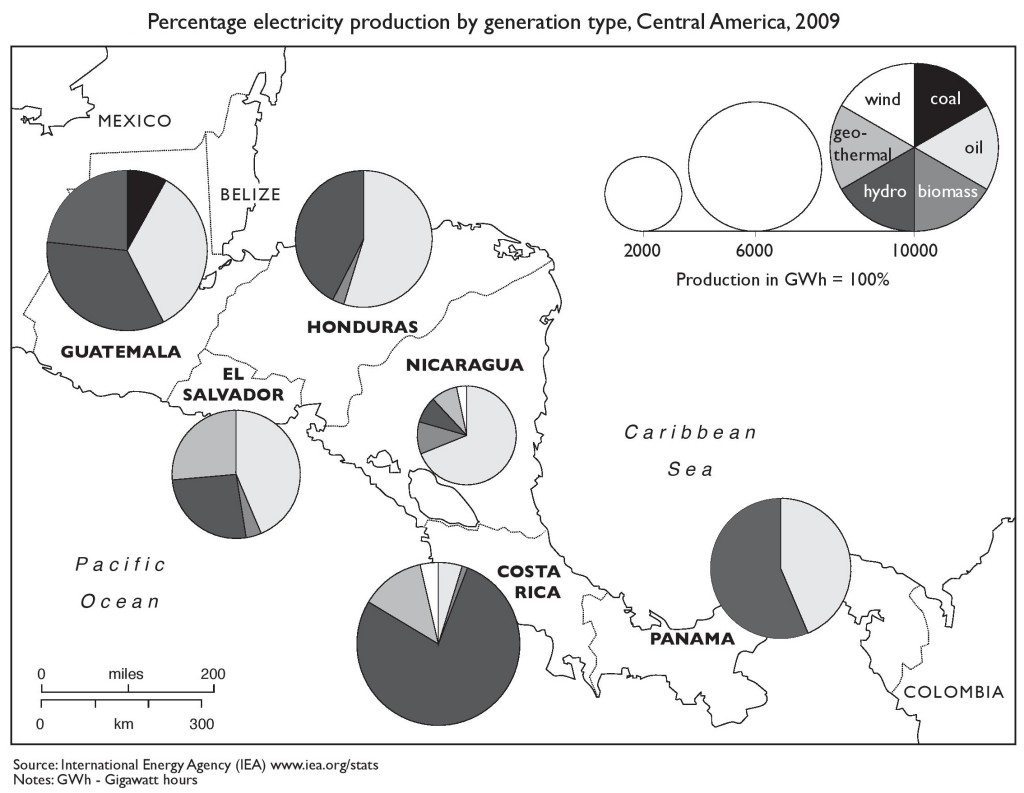
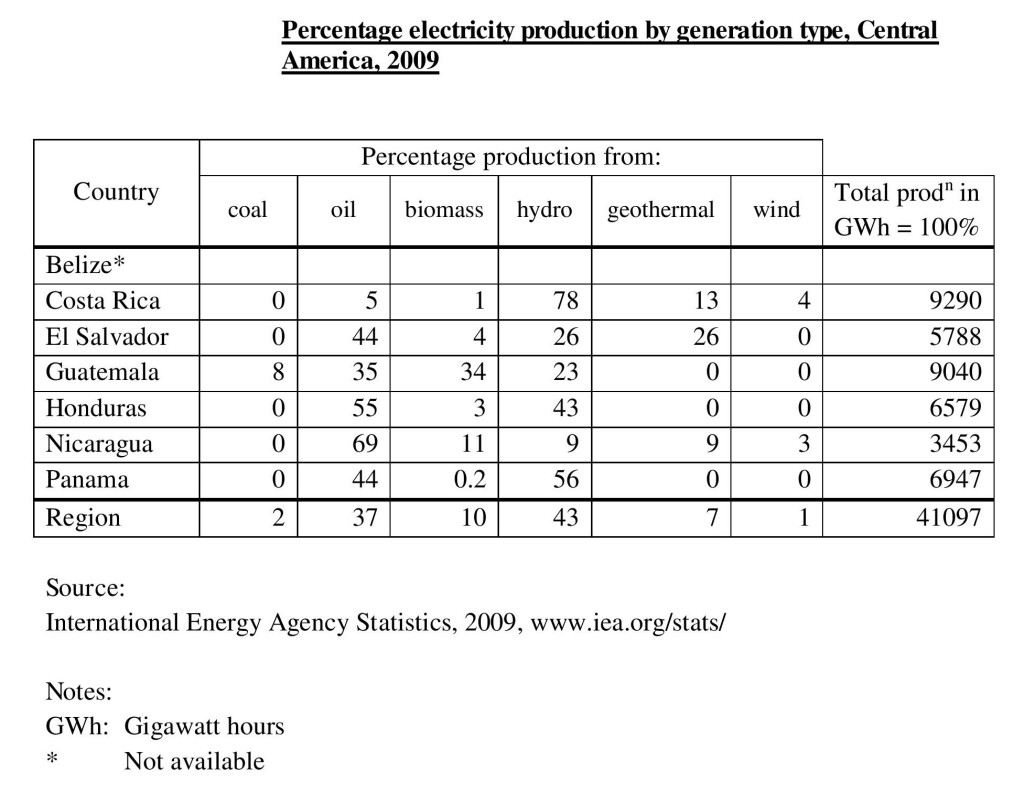

 San Marco’s isolation puts information at a premium. TV is not available, but radio is, and among other stations COPINH’s community radio can be received in the mountains. COPINH has an important role in providing information that strengthens the community. They are especially vulnerable to promises and misinformation from the companies involved in the dam building, and several community members have already been contacted with promises of money. It is a common tactic across Latin America for companies concerned about potential resistance to their plans to buy out individuals in order to divide and weaken the autonomy of communities. The COPINH meeting was mainly aimed at bringing their experience of the reality of Honduran dam projects to prepare San Marco for such interference.
San Marco’s isolation puts information at a premium. TV is not available, but radio is, and among other stations COPINH’s community radio can be received in the mountains. COPINH has an important role in providing information that strengthens the community. They are especially vulnerable to promises and misinformation from the companies involved in the dam building, and several community members have already been contacted with promises of money. It is a common tactic across Latin America for companies concerned about potential resistance to their plans to buy out individuals in order to divide and weaken the autonomy of communities. The COPINH meeting was mainly aimed at bringing their experience of the reality of Honduran dam projects to prepare San Marco for such interference.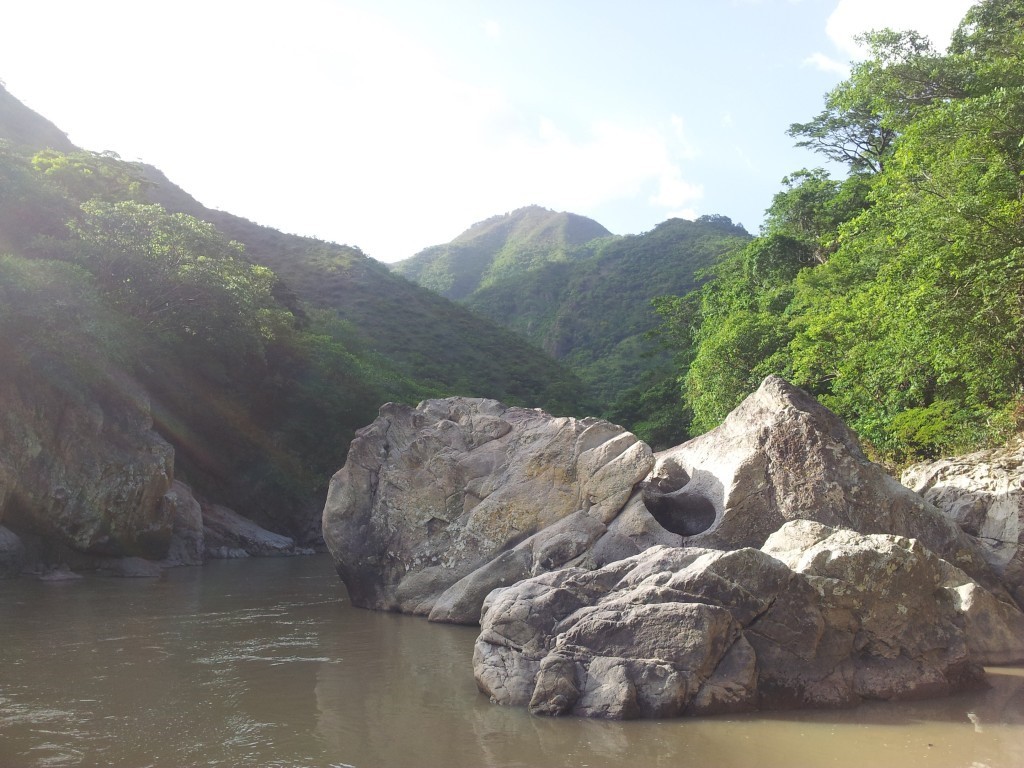
 In Belize, having bought the island of Blackadore Caye in 2005 (for US$1.75 million in partnership with Jeff Gram, owner of the exclusive Cayo Espanto Resort), Leonardo DiCaprio has drawn up plans to turn it into a luxury resort based on sustainable design, using solar power, for instance, for the landing strip.[vii]
In Belize, having bought the island of Blackadore Caye in 2005 (for US$1.75 million in partnership with Jeff Gram, owner of the exclusive Cayo Espanto Resort), Leonardo DiCaprio has drawn up plans to turn it into a luxury resort based on sustainable design, using solar power, for instance, for the landing strip.[vii]